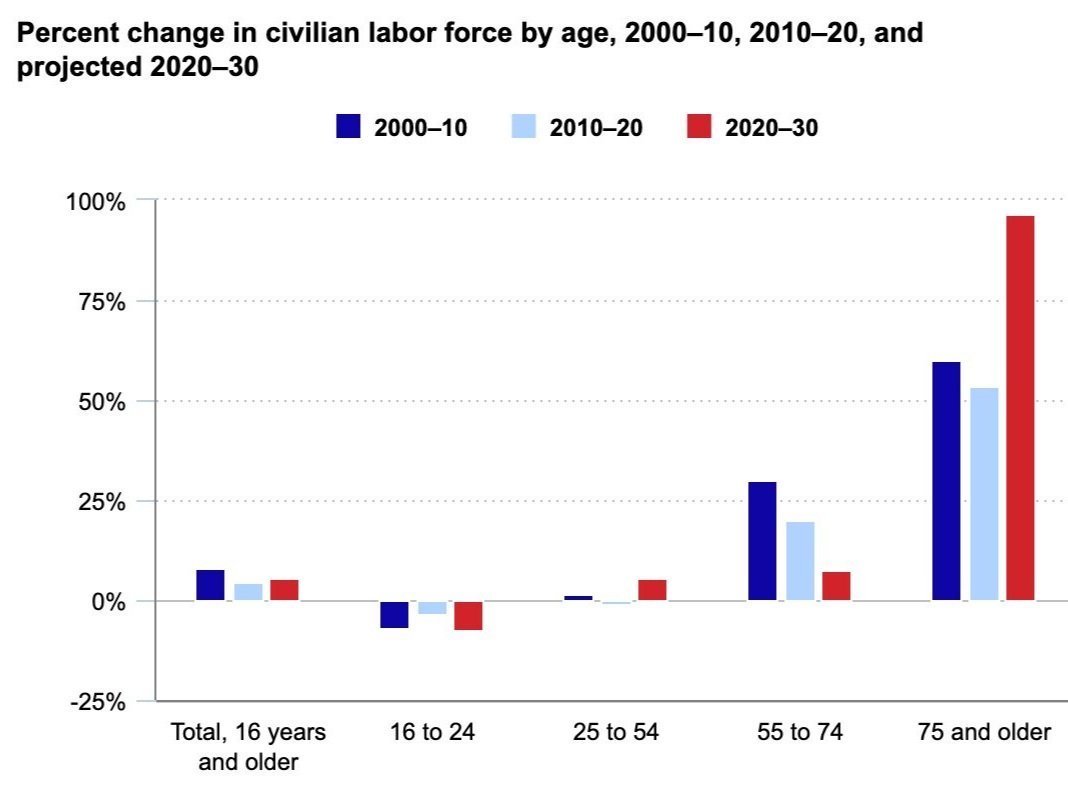Looking Toward the Future: Three Big Trends for 2022
Workforce reimagined
It’s no secret that the pandemic has radically altered the nature of work for a sizable portion of the population; some jobs will simply never be the same.
In the early days of the outbreak, more than a third of the U.S. workforce was engaged in remote work. However, by the end of the summer of 2021 just over one in ten was still working remotely. Regardless, the workers that were remote and those that returned began to expect that flexibility, at least, would remain part of their new work reality. They began using technology in novel ways and expecting more support from their employers.
The proverbial Pandora’s box had opened, and the likelihood of getting workers to go back to business as usual waned as the pandemic raged on; many resigned or went into outright revolt. Anthony Klotz, an organizational psychologist at Texas A&M University called it the “Great Resignation,” but that perspective, as well as its embrace by popular media, may have been a bit premature.
Source: Economic Policy Institute
At the onset of the pandemic, older workers took a battering, as they normally do during periods of economic downturn. However, according to the Economic Policy Institute this time was much worse than the Great Recession. Further, “55-64 years olds experienced more mild employment losses in the prior recession and workers ages 65 and older experienced outright gains.”
Older workers exited the workforce for other reasons too. They were fearful of losing their lives due to the pandemic, and some were financially motivated due to a strong stock market that drove up the value of their retirement portfolios. This created an artificial contraction of the labor market, which has left employers reeling. It wasn’t so much a “Great Resignation,” but more of a “Great Retirement” or “Great Realignment.”
Over the course of this decade, the labor force participation rate for people over the age of 75 in the United States is projected to grow by nearly 100 percent, according to the U.S. Bureau of Labor Statistics. In contrast, the total workforce will only expand by about 5 percent, and the 16-24 age group will likely decline. This means that employers will quickly need to adapt their hiring practices and working environments to be inclusive of generationally diverse populations.
Excluding workers based exclusively on their age, which is also known as ageism, threatens operational efficiencies and the bottom line. Businesses will have no choice but to make flexibility and caregiving central to their benefits package; ergonomics and inclusive design will move from afterthought to front and center. Technology, which was long seen as a barrier for older workers, will actually become a place to leverage their expertise.
Businesses will need to compete for talent with salaries and benefits, augment the workforce with automation and AI, support their workers through flexible work arrangements, and extend the working lives of all workers through ergonomics and inclusive design.
The rise of inclusive design
The number of older people is growing in the United States by 3.2 percent every year compared to 0.8 percent for the total population. Birth rates are dropping too, which is pushing up the average age of the population. That means that we’ll have to adapt to meet this new reality in the places that we live, work, and play.
As individuals age, there is a greater likelihood that they will experience deficiencies in mobility, vision, and cognitive function. However, none of these declines will make them any less human, or remove their desire to be part of society or the economy. Their interest in retaining normalcy may even grow, and a good number of them are willing to spend money to do so.
In order to meet the expectations of what their life should be, changes to the built environment will be required and embraced. This shift will facilitate the participation of older populations in society and the economy, while tapping into their immense spending power.
Spaces like apartments, government buildings, hotels, workplaces, restaurants, and retail environments, must adapt to their expectations and requirements, becoming more accessible and age-friendly. While some countries already require a minimum standard by law, this often results in accessibility being treated as an afterthought. Inclusive design, on the other hand, makes spaces usable by as many people as reasonably possible, as a natural and integral part of spaces and product design.
Companies like MotionSpot in the UK, GeroPro in Brazil, and KIBA in the U.S. are already taking the steps to make this a reality. They are designing spaces that not only work for more people with differing abilities, but they are making these places beautiful too. They are ahead of a trend that will make physical space and the experience of daily life better for all.
The metaverse arrives
Explaining something that we all need to be ready for, but doesn’t quite exist yet, may seem like folly. However, the metaverse is poised to change the lives of each and every person on the planet and it's going to be a virtual reality soon.
Imagine a world where people can engage, learn, work, see concerts, browse store shelves or libraries, watch movies with friends, and game in a virtual three dimensional space without leaving a physical home. Think of it like the internet on steroids where new models of commerce, work, and care will emerge.
Consider that it could revolutionize the way we do business, in many ways like other technological revolutions, but in a more dramatic way and faster too. It starts to become clear that this technology is transformative. It could even help alleviate some of our greatest social challenges, like isolation.
The metaverse may sound like science fiction today, but so did the internet in 1994. When the TODAY Show on NBC first introduced the U.S. to the world wide web, its hosts fumbled over explaining what it was, as well as its terminology. In just over 25 years, nearly three quarters of the global population is now actively connected.
Colin Pudsey, the brains behind SilVR Adventures, an Australian company that provides virtual reality experiences, put it this way, “There are limitless possibilities as this develops and it should open up even more opportunities to enhance communication and quality of life… The metaverse is an opportunity to improve isolation and loneliness.”






